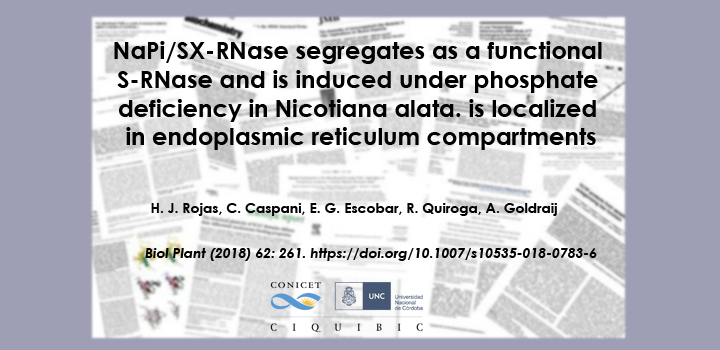Rojas, H et al. Biologia Plantarum 2018In plants, class III T2 RNases involves two groups of structurally similar proteins, but with different biological functions: S-RNases and non-S-RNases. S-RNases have been involved in self-incompatibility whereas non-S-RNases have been implicated in stress responses. Here we report a novel class III RNase termed NaPi/Sx-RNase, which works both in self-incompatibility and in response to phosphate deficiency. The NaPi/Sx-RNase gene was identified in roots of Nicotiana alata grown in the absence of inorganic phosphate. Phylogenetic analysis showed that NaPi/Sx-RNase was included within the class III RNase T2 group. The NaPi/Sx-RNase was expressed in styles and its temporal expression increased in parallel to stylar development, with a slight decrease after anthesis. Progeny analysis showed that NaPi/Sx-RNase and S107-RNase, a functional allele of the self-incompatibility system, segregated in a 1:1 ratio. The progeny segregation of a semicompatible cross, in which NaPi/Sx-RNase was shared by the two parents, exhibited a pattern consistent with a functional S-RNase allele. Considering genetic segregation, primary structure, and physiological role, the NaPi/Sx-RNase may be either an S-RNase with diversified functions or a non-S-RNase linked to the S-locus. To our knowledge, this is the first evidence for a specific function of the S-locus other than the self-incompatibility reaction. These results support the hypothesis that the self-incompatibility and stress responses may have evolved from a common origin.
Autores: H. J. Rojas, C. Caspani, E. G. Escobar, R. Quiroga, A. Goldraij



